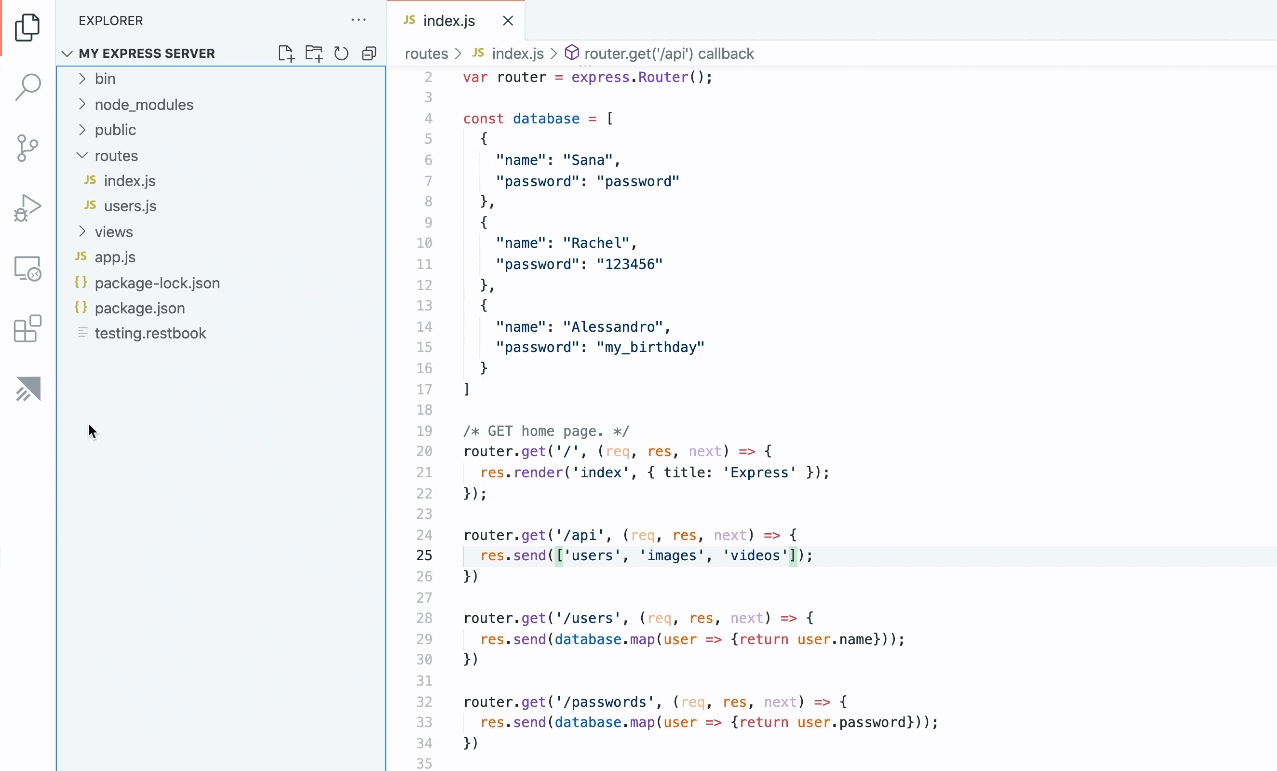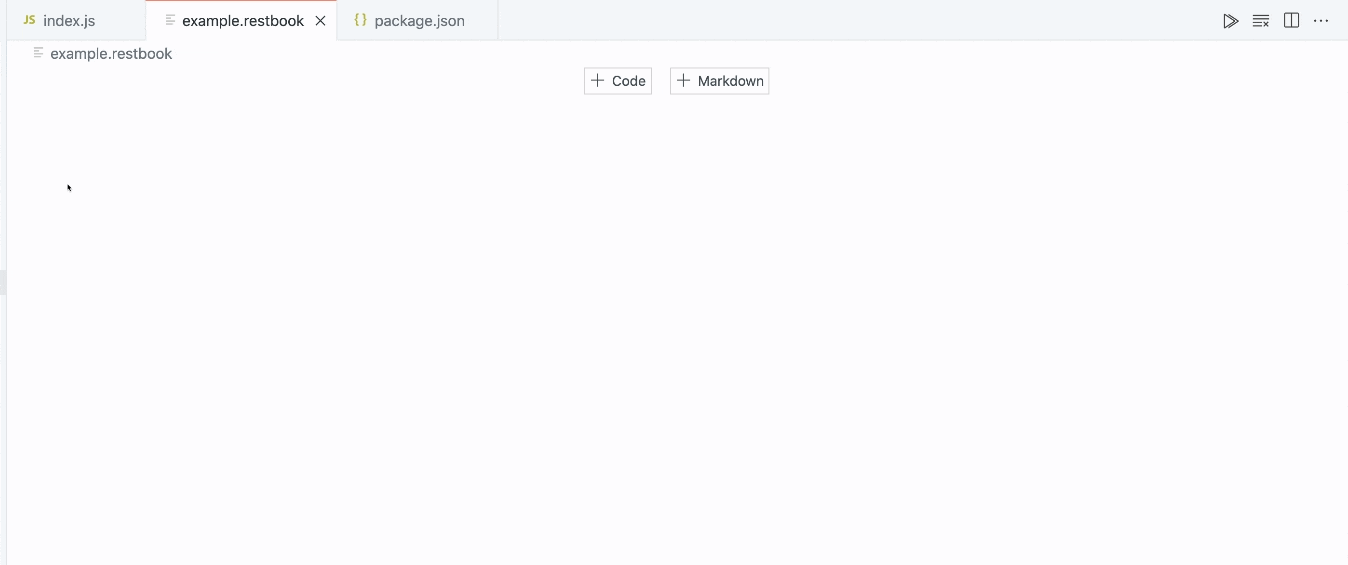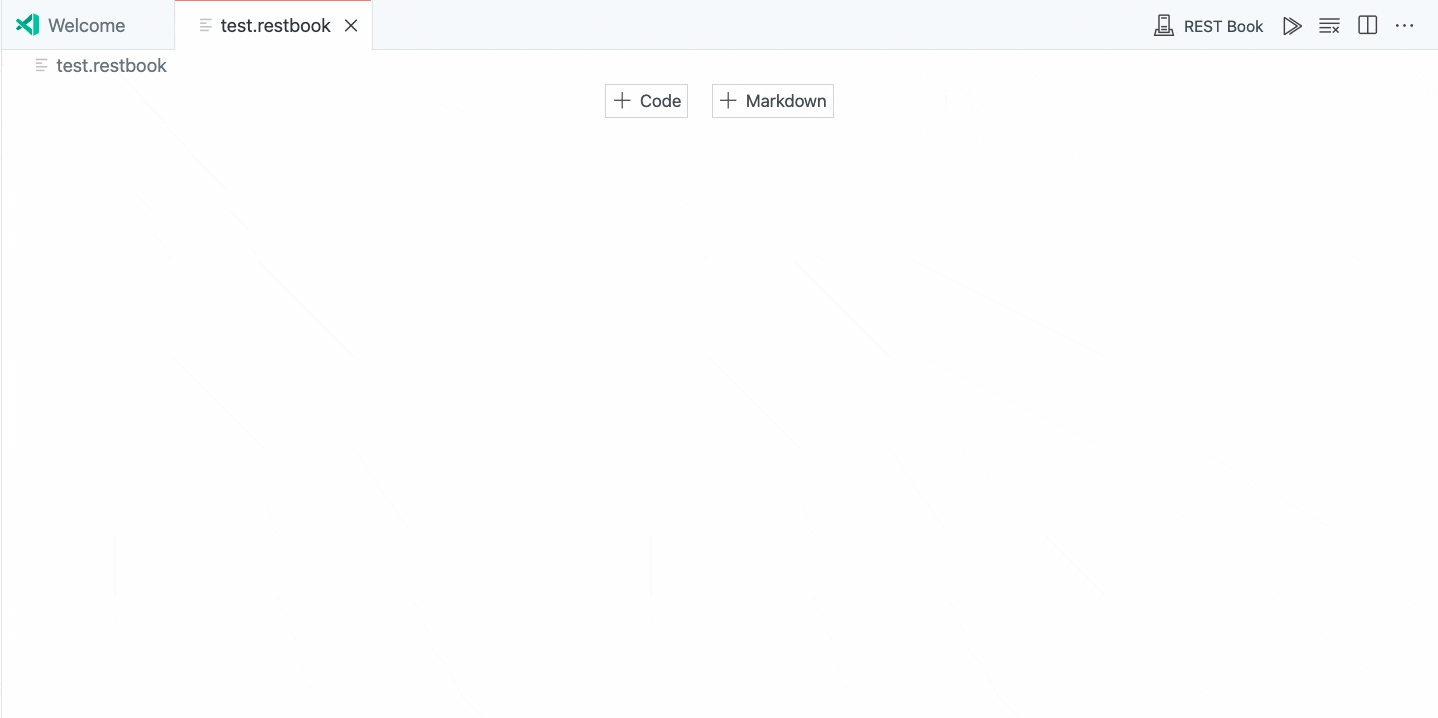REST Book is a Visual Studio Code extension that allows you to perform REST calls in a Notebook interface.
- Create and run REST Calls within cells.
- Organize multiple REST Calls within one file.
- Intermingle markdown for documenting your calls.
- View rich HTML and image responses directly inside the Notebook.
- Basic Authentication
- Use data from one call in the next
- Save API keys and other sensitive information outside of the Notebook to use securely in calls.
Must be using the latest version of Visual Studio Code Insiders edition.
- Create a new file to store your REST Calls with a
.restbookending. You can also use the command:
You can also use the command: REST Book: Create a new blank REST Notebook.
- Add a code cell by hovering over the middle of the Notebook and clicking the
+ Code - Add your intended URL as the first line of the cell. By default without specifying a method, it will be a GET call.

To toggle between the different views for the results of calls you can change mimetype like so:

google.comis equivalent to:
GET google.comIn subsequent lines immediately following the first line add any parameters or queries starting with ? or & like this:
GET https://www.google.com
?query="fun"
&page=2In the lines following without an empty line will be considered as the Request Headers:
GET https://www.google.com
?query="fun"
&page=2
User-Agent: rest-book
Content-Type: application/json The last lines after a new line separator is the body of the call. Like the following:
POST https://www.myapi.com
User-Agent: rest-book
Content-Type: application/json
{
name: "Foo",
text: "Foo is the most bar of the Foos"
}Or you can load the body from another file like so:
POST https://www.myapi.com
User-Agent: rest-book
Content-Type: application/json
./body.txtYou can also assign the responses from calls to a variable and use the data from that response in future calls. To do this you would just declare a variable with let and the name of your variable and then a = like so:
let foo = GET google.comAnd then in future cells you can reference foo in your calls with a $ sign. Here's a short example:

If you'd like to use secret information in your calls like API keys but you don't want to use and save the raw text of these keys in the REST Notebooks, you can use secrets to save and access API keys.
To save secrets, look for the command REST Book: Secrets in the command palette with Cmd+Shift+P (MacOS) or Ctrl+Shift+P (Windows). Add a new secret and a name for that secret.
Then when use your secrets in your calls using the $SECRETS variable. In this example I'm saving a secret with the name mySecret and then accessing this secret to send to my Express server with $SECRETS.mySecret. You can see my server received my secret value of "hooray" correctly but the secret text is not visible anywhere in the Notebook.
And you can see that the actual secret is not saved in the results of the call. Every place that used a secret will be replaced by [Secret <secret name>]; this is for all parameters, headers, and bodies sent. Here you can see that my secret text "hooray" was replaced by [Secret mySecret] in the view of the request I sent.
To test these interactions, you can play around with this simple server: SandboxServer
Unable to save responses. This should be fixed soon in the next few versions of VS Code Insiders.
Please submit your issue on the tanhakabir/rest-book repository with exact reproduction steps.


